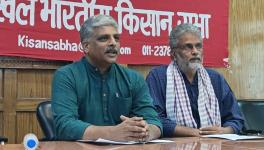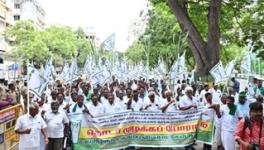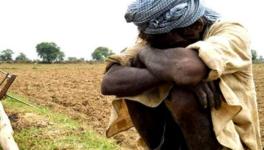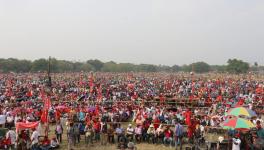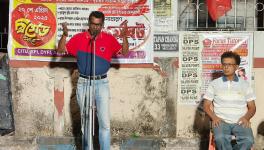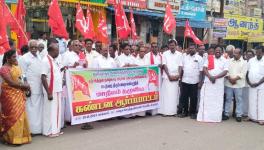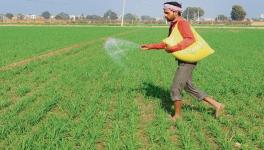Severe Droughts to Go Unreported?
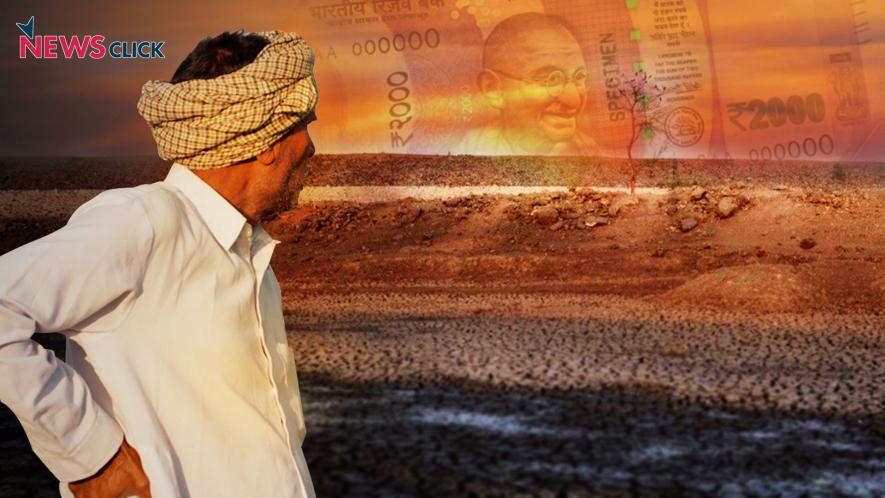
Though the India Meteorological Department (IMD) had declared a month ago that as many as 255 districts of the country have witnessed deficit rainfall of 20 to 59 per cent during the South-West monsoon, many of the states are yet to declare a drought. Due to this laxity, farmers in these areas have been suffering.
During the Southwest monsoon, between June 1, 2018, and September 30, 2018, nine percent deficit in rainfall was recorded as compared to the long period average (LPA) across the country. Southern Peninsula and Northwest India have received 98 percent of the LPA, while the central India received 93 percent of the LPA. However, East and Northeast India have received only 76 percent of the LPA.
The drought-hit districts account for nearly 35 per cent of all the districts in India. More than 50 per cent of the districts in Bihar, Jharkhand, West Bengal, Gujarat, Tamil Nadu, Meghalaya, Karnataka, Arunachal Pradesh and Goa have received deficient rainfall, says a report by Down to Earth.
States including Maharashtra, Karnataka, Bihar, Odisha, Meghalaya, Andhra Pradesh and Jharkhand have reportedly declared drought, stepping up the mitigation measures. However, Gujarat, Assam and Uttar Pradesh are yet to declare a drought.
Read More: Nearly Half of Maharashtra to Face Severe Water Crisis in 2018-19
In Gujarat, the Saurashtra and Kutch regions have marked a deficit rainfall of 34 percent. Whereas, the East and South Gujarat recorded the deficit of 24 percent. Assam has received 26 percent deficit rainfall in the 10 districts of the state. Evan as a large chunk of Uttar Pradesh received 40 percent deficit rainfall, the state is yet to be declare drought. Ten districts in West Bengal have also witnessed a deficit in rainfall.
Has the manual for drought management updated in 2016 made the parameters to declare drought complex and stringent?
Ajit Navale, state general secretary of All India Kisan Sabha (AIKS), said that the situation has worsened because the Centre had changed the parameters for drought assessment. The new manual of 2016 also limited the Centre’s scope to offer financial assistance to the states.
According to the drought management manual of 2009, a drought is assessed on five different parameters – availability of drinking water, irrigation water, fodder and food grains, and energy sector requirement. In 2015, however, the Centre had released a comprehensive Drought Crisis Management Plan, which was released in December 2016, with an intention to get “more accurate assessment of drought.”
Absolving Centre’s responsibility to provide financial aid, the 2016 manual said that the relief measures must be implemented by respective state governments with Centre’s active participation.
The 2009 manual had two streams of financing relief expenditure – Calamity Relief Funds (CRF) and National Calamity Contingency Fund (NCCF). The contribution of the Centre and respective state governments was in the ratio of 3:1 for CRF. This distribution ensured the distribution of money for the relief operations.
Read More: The Manual for Drought Management, 2016 Won’t Let North Karnataka Be Declared Drought-hit
The new manual portrays four impact indicators, and 13 sub-indices which are called ‘trigger indicators’. Depending on the number of indicators, the magnitude of the droughts can be categorised as either ‘severe’ or ‘moderate’.
If two of the four impact indicators are applicable to an area, then that area would be declared ‘moderately affected’. Whereas, three of the four are applicable to an area, then it would come under the category ‘severely affected’. However, rainfall and ground verification are not listed as the key factors in the new manual, while vegetation, hydrological indices, crop situation indices etc. are listed as impact indicators. Apart from this, the indicator on moisture content in soil says that only if the moisture content is less than 25 per cent, then only the drought can be considered ‘severe’. While it would be difficult to generalise the moisture content for all the crops, some crops require high moisture content and if it is reduced, it will have severe effect on the produce.
Since the time of its introduction, farmers’ leaders and experts have been pointing out that the strict parameters for drought declaration would make things worse for the farmers across the country.
“At the outset, the new manual acknowledges that drought has complex nature and varying characteristics that manifest across different agro-climatic regions in different ways. But, it then goes on to prescribe very strict indices for the declaration of drought across six climatic zones in the country,” said KJ Joy of Society for Promoting Participative Ecosystem Management while speaking with VillageSquare.in. “If the new manual is followed, then several droughts in the country will go unreported.”
In January this year, the Maharashtra state government urged the Centre for relaxation of conditions set for the declaration of drought in the 2016 manual. Of the 136 talukas in the state, which had demanded that they should be declared ‘drought-hit’, only three were “eligible” to be there in the category as per 2016 manual definition, that too in the ‘moderate’ category.
In the case of ‘moderate’ drought, state governments are responsible to give financial assistance, and the Centre does not have to step in, in this scenario. The BJP-led Maharashtra government’s Relief and Rehabilitation Department, however, was forced to draft a letter to Centre saying that most of the indicators in the 2016 manual are irrelevant.
Read More: PMFBY – Insurance Companies Make Super Profits, Farmers Suffer
Get the latest reports & analysis with people's perspective on Protests, movements & deep analytical videos, discussions of the current affairs in your Telegram app. Subscribe to NewsClick's Telegram channel & get Real-Time updates on stories, as they get published on our website.










